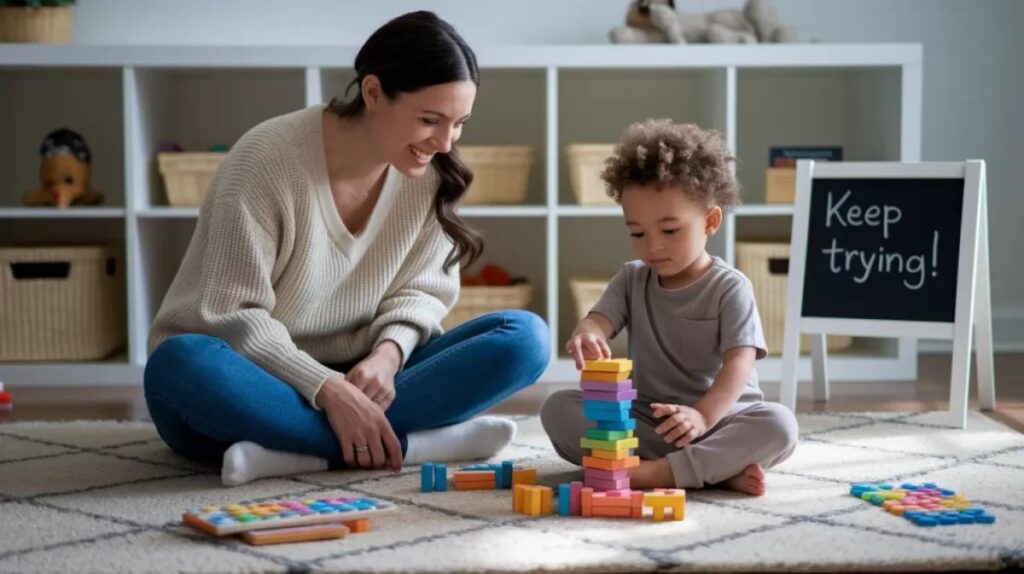The Parenting & Family Blog

The Best Ways to Foster a Growth Mindset in Children
In today’s busy world, helping children develop the right mindset is crucial for their future success and well-being. One of the strongest mindsets parents and teachers can encourage in kids is a growth mindset. A growth mindset, from psychologist Carol Dweck, means believing you can improve your skills and intelligence through hard work and dedication. This mindset fosters a love for learning and builds resilience. Resilience is key to overcoming challenges and setbacks.
In this blog, we will look at why a growth mindset is vital for children. We’ll share simple ways to teach resilience. We’ll also show how to help kids become confident learners. Whether you’re a parent, teacher, or caregiver, these tips will help you support children’s growth and development.
Why Fostering a Growth Mindset Matters
Understanding the Growth Mindset
A growth mindset means believing that you can develop your talents and skills. You can do this through effort, effective teaching, and persistence. This is different from a fixed mindset. In a fixed mindset, people think their abilities stay the same and can’t change. Encouraging a growth mindset in children is important. It helps them face challenges, keep going when things get tough, and view effort as a way to improve.
Real-Life Applications
Kids with a growth mindset are more likely to tackle tough tasks, love learning, and reach greater success. A child who thinks they can get better at maths with practice is more likely to try hard problems and ask for help when needed. This mindset boosts academic performance and helps children face real-world challenges.
Data-Backed Insights
Studies show that students with a growth mindset do better than those with a fixed mindset. A Stanford University study found that students taught about the malleability of intelligence improved more academically than those who weren’t. A growth mindset can transform how we learn and grow personally.
Teaching Resilience to Children

The Importance of Resilience
Resilience means bouncing back from tough times and continuing on, even when things get hard. Teaching kids resilience is key. It gives them the tools to face life’s challenges. Resilient children are better at bouncing back from setbacks. They stay positive and find ways to cope, which helps their mental and emotional health.
Strategies for Building Resilience
Encouraging a Positive Attitude
Encourage kids to see challenges as chances to grow. This helps build a positive attitude. Teach them to reframe negative thoughts and focus on the positives, such as what they can learn from a difficult situation.
Modelling Resilience
Children learn by observing the adults around them. Model resilience by demonstrating how you handle setbacks and challenges. Share your experiences and discuss the strategies you use to overcome obstacles.
Teaching Problem-Solving Skills
Help children build problem-solving skills. Encourage them to think critically and explore various solutions. Help them spot a problem, think of solutions, and check the results.
Fostering a Supportive Environment
Create a supportive environment where children feel safe to express their feelings and seek help when needed. Encourage open communication and let them know that it’s okay to ask for assistance.
Examples and Case Studies
Consider the story of a young athlete who, after failing to make the school team, used the experience as motivation to improve their skills. With a coach who valued hard work and determination, the athlete joined the team the following year and shone in competitions. This example illustrates how resilience and a growth mindset can lead to success.
How to Raise Confident Learners
Building Confidence Through Encouragement
Confidence is a crucial component of a growth mindset. To raise confident learners, provide regular encouragement and positive reinforcement. Celebrate their efforts and achievements, big or small. Focus on the progress they’ve made, not just the end result.
Setting Realistic Goals
Help children set realistic and achievable goals that challenge them without overwhelming them. Break larger tasks into smaller, manageable steps and celebrate each milestone along the way.
Encouraging Independence
Promote independence by allowing children to take ownership of their learning. Encourage them to make choices, tackle issues, and take chances in a caring setting. This fosters a sense of autonomy and builds confidence in their abilities.
Providing Constructive Feedback
Offer constructive feedback that focuses on effort and improvement rather than innate ability. Use specific examples to highlight areas for growth and provide guidance on how to improve. This approach supports the idea that skills can grow with hard work and commitment.
The Role of Educators and Parents
Both educators and parents play a crucial role in raising confident learners. Teachers can build a classroom that values effort and perseverance. At the same time, parents can support these values at home. By working together, they can provide a consistent message that supports the development of a growth mindset.
Additional Expert Tips & Common Mistakes to Avoid

Best Practices for Fostering a Growth Mindset
- Encourage a Love for Learning: Spark curiosity and a wish to learn by giving children different experiences and chances.
- Use Praise Wisely: Praise effort and progress, not just talent or intelligence.
- Embrace Mistakes: Show kids that making mistakes is normal. It’s part of learning and helps them grow.
Common Mistakes to Avoid
- Overemphasising Results: Avoid placing too much emphasis on grades or outcomes, as this can lead to a fixed mindset.
- Providing Too Much Assistance: Allow children to struggle and solve problems independently, as this builds resilience and problem-solving skills.
- Ignoring Emotional Needs: Address children’s emotional needs and provide support when they face challenges or setbacks.
Advanced Insights & Expert Recommendations
The Power of Mindset Interventions
Mindset interventions, such as workshops and activities that teach the principles of a growth mindset, have been shown to improve academic performance and increase motivation. Try these actions at school and home to help build a growth mindset.
Leveraging Technology for Growth
Utilise technology to support the development of a growth mindset. Educational apps and online platforms offer fun and interactive ways to boost learning and resilience.
Encouraging a Growth Mindset in Adolescents
As children grow into adolescents, the challenges they face become more complex. Foster a growth mindset during this important time. Offer chances for leadership, self-reflection, and setting goals.
Strategies for Raising Resilient and Confident Learners
Fostering a growth mindset in children is one of the most valuable gifts we can give them. We teach resilience, boost confidence, and foster a love for learning. This helps them face life’s challenges with optimism and determination. As parents, educators, and caregivers, we guide and support children. We help them become confident learners. They learn to embrace challenges and aim for ongoing growth.
In the words of Carol Dweck, “The view you adopt for yourself profoundly affects the way you lead your life.” Let’s empower the next generation to adopt a growth mindset and unlock their full potential.
What strategies have you used to foster a growth mindset in children? Share your experiences in the comments below!









